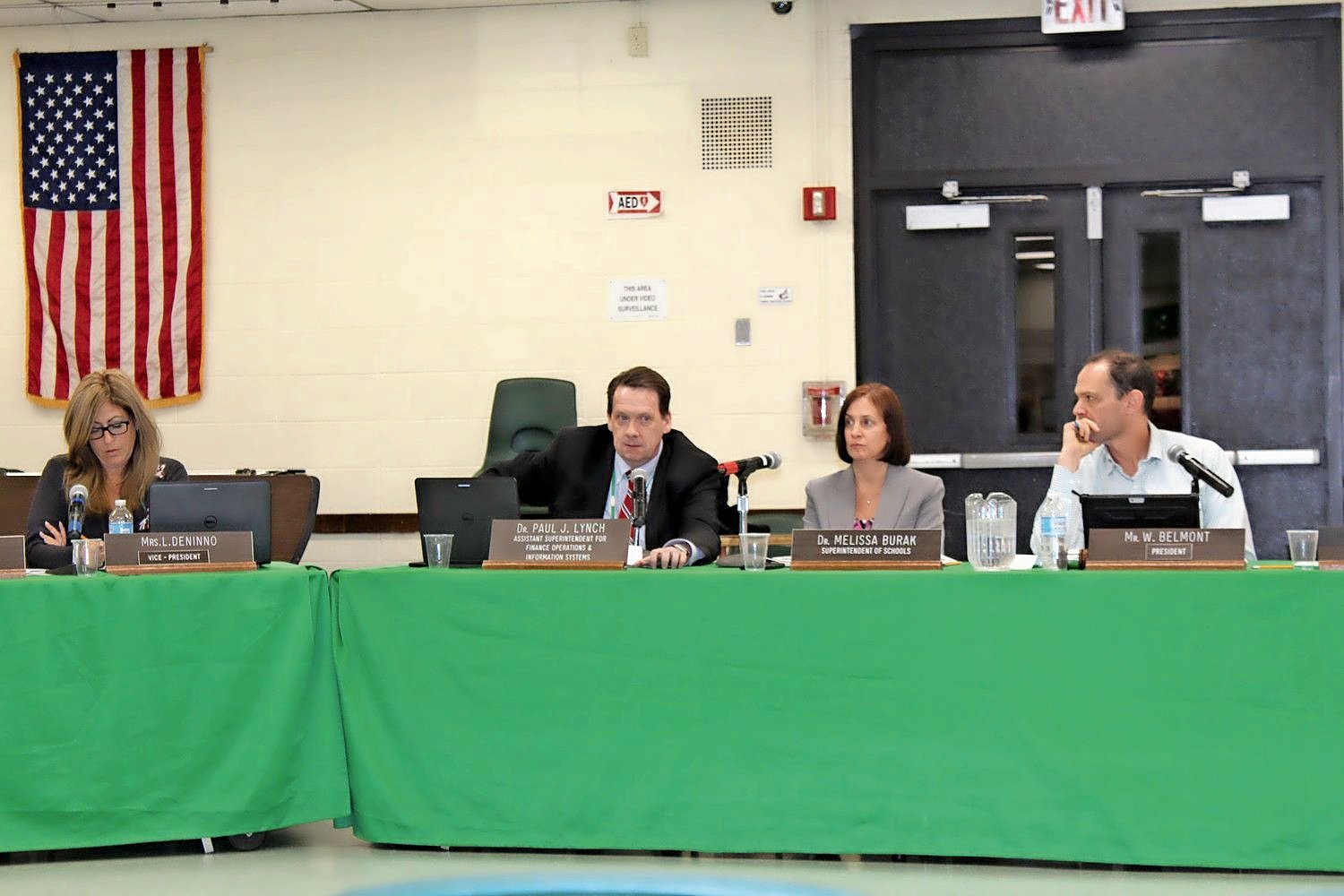Lynbrook security upgrades expected to begin in February
The Lynbrook School District is set to begin upgrading its security infrastructure. Funding for the project comes more than four years after New York voters approved a $2 billion Smart Schools Bond Act to improve educational technology and security in school districts across the state.
Dr. Paul Lynch, the assistant superintendent of finance, operations and information systems, announced at the Dec. 12 Board of Education meeting that the district would award a $416,000 bid to Brooklyn-based JNH Construction Group Inc. to install security vestibules at all six district schools. The vestibules include an extra set of doors to “prevent visitors from entering the building unless they have been cleared for approved access,” Superintendent Dr. Melissa Burak explained.
Lynch said that the company would order the parts for the vestibules immediately, and that district officials hoped construction would begin after the February recess. He added that he expected the work to be completed by the end of the year.
“Hopefully, the work will be done in the evenings or on the weekends,” Lynch said, “but it may be that there are times that the doors are closed and kids are going to have to use another door.”
Along with the security vestibules, Lynch announced that the district would install a new visitor management system. He also noted that workers had already started installing wiring for a new Internet Protocol-based security system that will establish a separate and distinct security network for the district and add high-resolution cameras at all doors.
In June, Gov. Andrew Cuomo announced that 46 districts and three special-education schools had their Smart Schools plans approved, totaling $34 million. Lynbrook’s projects will total $843,860.
State Education Department officials approved the district’s plans to use the money in the spring, after a lengthy review process. After the Smart Schools Bond Act was approved, Lynbrook school administrators held meetings with the district’s Health and Safety Committee to decide how to use the funding. Then, in early 2015, the district’s Office of Information, Technology and Facilities consulted with an architect to develop a plan. The project’s scope was approved in the spring of 2016. Letters of intent for the projects from school officials were approved by the SED that August, and a preliminary plan was approved by the Health and Safety Committee that September. In October 2016, the preliminary plan was posted for public comment, and it was adopted after a public hearing that November.
District officials submitted their plans to the SED on March 2, 2017, but a department review board took more than a year to complete the expenditure review process, during which state officials did not contact the district.
During the delays, then Assemblyman Brian Curran (R-Lynbrook) and State Sen. Todd Kaminsky (D-Long Beach) each contacted the SED in February to expedite the process, citing parents’ safety concerns, and Burak wrote a letter to SED Commissioner MaryEllen Elia on Feb. 16, two days after the deadly mass shooting at Marjory Stoneman Douglas High School in Parkland, Fla., urging the department to approve the funding. In June, Board of Education President William Belmont said he was pleased that plans were approved, but was upset about the delays. “You would think the state would want to approve this as quickly as possible,” he said at the time.
At the March Board of Education meeting, Lynch expressed frustration with the delays. “There is $892,000 with our name on it that, if we were given the permission, there are plans in my desk ready to go,” he said. “That is a tragedy, and if anything should happen in this district, and I said this — and I’m sorry for getting so passionate — there would be blood on their hands that they did not do the right thing by the children of this state.”
On Dec. 12, Lynch reminded the public about the long process. “We got into a little bit of a black hole at the state last year,” he said. “I think I lost my patience at this meeting one time. I got a little overly passionate.”
Mike Smollins contributed to this story.

 45.0°,
Fair
45.0°,
Fair 




